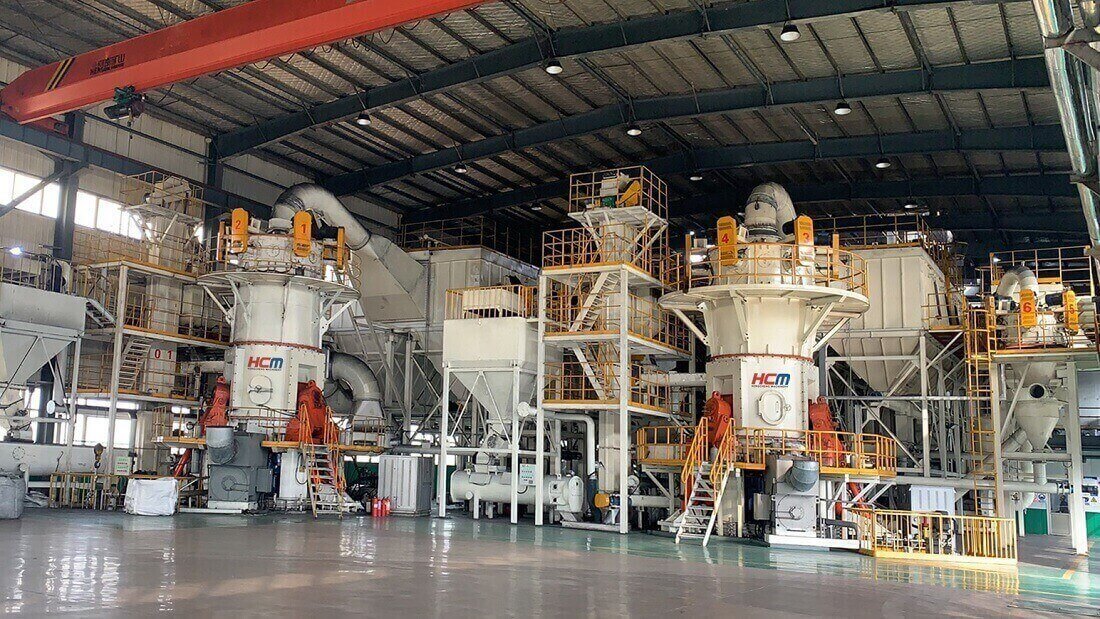Our country is a “big resource consumer” of glass. With the rapid economic development, glass consumption is increasing day by day, and the disposal of waste glass has gradually become a thorny issue. The main component of glass is active silica, so after being ground into powder, it can have pozzolanic activity and can be used as an admixture to prepare concrete. This can not only solve the problem of disposal of waste glass, but also promote the development of green and environmentally friendly building materials. HCM Machinery is a grinding mill manufacturer. The grinding mill we produce is equipment used to grind waste glass powder. Today I will introduce to you the role of glass powder on cement.
By analyzing the compressive strength test of concrete mixed with glass powder and the microscopic examination results of cement paste, it can be concluded that although the CaO of glass powder can react with water, it is very weak. Therefore, it can be considered that glass powder does not have hydraulic hardness. When the blending amount of glass powder is 10%, for example, the active silica, alumina and calcium hydroxide in the glass powder react to form low-alkalinity hydrated calcium silicate. The active silica can also react with high-alkalinity hydrated calcium silicate. Calcium silicate hydrate reacts to produce low-alkali calcium silicate hydrate. While reducing the calcium hydroxide content, a portion of hydrated calcium silicate is generated, which improves the density and impermeability of the hardened slurry; it reacts with the cement hydration product calcium hydroxide (Ca(OH)2) to generate water Hydrated calcium silicate reduces the content of Ca(OH)2 in concrete, increases the content of hydrated calcium silicate, and improves the strength of concrete.When the glass powder content reaches 20%, because the cement content decreases, the hydrates generated by cement hydration also decrease, but the glass powder reacts with cement hydrates to form partially hydrated calcium silicate.When the amount of glass powder reaches 20%, the strength is still comparable to the benchmark concrete. When the amount of glass powder continues to increase and the cement content gradually decreases, the amount of hydration products becomes less and less, and the glass powder reacts with cement hydrates The increased hydrate is not enough to compensate for the decrease in hydration products caused by the decrease in cement content. Therefore, the strength is getting lower and lower. It is also found that when the amount of glass powder is too much, cracks will appear.
This is because while the amount of cement is reduced, the demand for active silica participating in the hydration reaction is also reduced. The remaining active silica reacts with the alkaline substances in the glass powder, causing internal expansion of the concrete. The hardened cement paste will also crack and produce larger cracks, and the strength of the concrete will also be reduced.
The effect of glass powder on cement:
(1) The 28-day compressive strength of concrete prepared with colorless transparent glass powder and green glass powder mixed with 10% and 15% of cement instead of cement is higher than that of the benchmark concrete; when the dosage is 20%, the strength is the same as that of the benchmark concrete. Comparable to concrete; when the dosage is 30% and above, the compressive strength of concrete decreases a lot.
(2) When no glass powder is added, calcium hydroxide crystallizes well and is larger in size. As the amount of glass powder increases, the content of calcium hydroxide gradually decreases and the crystallization becomes worse and worse.
(3) Adding glass powder of different colors does not have a great impact on the strength of concrete.
(4) Glass powder is used to prepare concrete and has great ecological effects.
The role and economic benefits of glass powder on cement: Glass powder replaces cement, which can save 19,300 kW. , NOx15.1 t. If 20% of the 3.2 million tons of waste glass produced every year in our country is used to prepare concrete, there will be great ecological and economic benefits. The waste glass grinding machine produced by HCM Machinery is equipment for producing glass powder. It can process 80-600 waste glass powder to meet the processing needs of glass powder cement substrate. If you have relevant needs, please give us a call for details:hcmkt@hcmilling.com
Post time: Dec-04-2023









